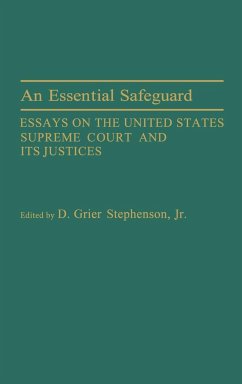This timely collection examines the record of current and recent justices in fashioning the Constitution and looks at the larger political context in which their work has occurred. The eight essays, written by distinguished scholars of the Supreme Court, review the achievements of current Justices O'Connor and Rehnquist as well as recent justices Douglas, Black, and Harlan. The essay on Justice O'Connor is one of the first overall assessments of her record to appear in print. Editor D. Grier Stephenson, Jr.'s introductory chapter presents an insightful overview of the Supreme Court's role in American government today. Collectively these chapters make a rich contribution to an understanding of constitutional government and render a complex subject both accessible to general readers and interesting to experts. Following editor Stephenson's cogent introduction, Henry Abraham's Can Presidents Really Pack the Supreme Court? focuses on the political and intellectual environments within which the Supreme Court functions and on the candidates selected by presidents to sit on the High Bench. In Chapter Three, former solicitor general Rex E. Lee zeroes on a central aspect of, and a key player in, the judicial process. Leadership and the relationships among the justices are the subject of Chapter Four. Harold J. Spaeth's essay on Justice Sandra Day O'Connor emphasizes personality as an element contributing to the Court's decisions. The legacy of Justice William O. Douglas and the impact of the Court's past on its present decisions are both examined by Walter Murphy. Similarly, the next chapter's study of Justice John Marshall Harlan shows the importance of the Constitutional legacy in understanding the Supreme Court. Affirmative Action and the Supreme Court reviews the responses of current members of the Court to one of the most divisive and significant policy questions of our time. The concluding essay surveys Chief Justice Rehnquist and the Future of the Supreme Court. This volume is important reading for students of law, history, and political science.
Hinweis: Dieser Artikel kann nur an eine deutsche Lieferadresse ausgeliefert werden.
Hinweis: Dieser Artikel kann nur an eine deutsche Lieferadresse ausgeliefert werden.








